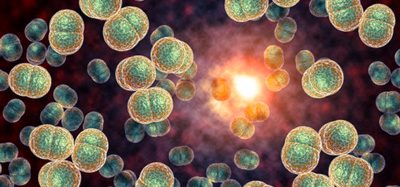New probes shine a light on the role of four-stranded DNA in human cells
Posted: 14 January 2021 | Hannah Balfour (Drug Target Review) | No comments yet
A better understanding of the role of four-stranded DNA (G-quadruplex) could enhance cancer therapeutics, said the developers of the probes.


Using novel probes, scientists have been able to observe how four-stranded DNA (G-quadruplex) interacts with molecules and enzymes within living cells. According to the researchers, unravelling the role of G-quadruplex in cellular processes could enable them to develop new drugs for diseases like cancer.
DNA is typically found in the classic double helix structure, with two antiparallel strands wound around each other, in living cells. While DNA has been shown to form some more exotic shapes in test tubes, few have been observed in living cells.
However, some recent research has reported G-quadruplex forming naturally in human cells, with higher concentrations found in cancer cells. To investigate further, a research group led by Imperial College London scientists created a new fluorescent probe that enables them to observe G-quadruplexes interacting inside living cells.
One of the lead authors, Ben Lewis, from the Department of Chemistry at Imperial, said: “A different DNA shape will have an enormous impact on all processes involving it – such as reading, copying or expressing genetic information. Evidence has been mounting that G-quadruplexes play an important role in a wide variety of processes vital for life, and in a range of diseases, but the missing link has been imaging this structure directly in living cells.”
![Fluorescence lifetime imaging microscopy map of nuclear DNA in live cells stained with the new probe. Colours represent fluorescence lifetimes between 9 (red) and 13 (blue) nanoseconds [Credit: Imperial College London].](https://www.drugtargetreview.com/wp-content/uploads/G-quadruplex-image-375x156.jpg)
![Fluorescence lifetime imaging microscopy map of nuclear DNA in live cells stained with the new probe. Colours represent fluorescence lifetimes between 9 (red) and 13 (blue) nanoseconds [Credit: Imperial College London].](https://www.drugtargetreview.com/wp-content/uploads/G-quadruplex-image-375x156.jpg)
Fluorescence lifetime imaging microscopy map of nuclear DNA in live cells stained with the new probe. Colours represent fluorescence lifetimes between 9 (red) and 13 (blue) nanoseconds [Credit: Imperial College London].
The team used a chemical probe called DAOTA-M2, which fluoresces in the presence of G-quadruplexes and then monitored how long this fluorescence lasts. According to the scientists, the length of time that a molecule fluoresces, called the fluorescence lifetime, not depend on the concentration of the probe or of G-quadruplexes, unlike the brightness of fluorescence, making it a more reliable way to visualise these rare molecules.
The team used their probes to study the interaction of G-quadruplexes with two helicase proteins – molecules that ‘unwind’ DNA structures. They showed that if these helicase proteins were removed, more G-quadruplexes were present, showing that the helicases play a role in unwinding and thus breaking down G-quadruplexes.
They also examined the ability of other molecules to interact with G-quadruplexes in living cells. If a molecule binds to the DNA structure, it will displace the DAOTA-M2 probe and reduce its fluorescence lifetime. This allows researchers to study interactions occurring inside the nucleus and for molecules that are difficult to visualise, eg, they do not fluoresce or cannot be seen under the microscope.
Commenting on the importance of their discoveries, Professor Ramon Vilar, from the Department of Chemistry at Imperial, said: “Many researchers have been interested in the potential of G-quadruplex binding molecules as potential drugs for diseases such as cancers. Our method will help to progress our understanding of these potential new drugs.”
Peter Summers, another lead author from the Department of Chemistry at Imperial, said: “This project has been a fantastic opportunity to work at the intersection of chemistry, biology and physics. It would not have been possible without the expertise and close working relationship of all three research groups.”
The groups said they want to continue collaborating to improve the properties of their probe, explore new biological problems and continue to investigate the roles G-quadruplexes play inside our cells.
The paper was published in Nature Communications.
Related topics
Analytical Techniques, Cell Cultures, Disease Research, DNA, Drug Targets, Imaging, In Vitro
Related conditions
Cancer
Related organisations
Imperial College London
Related people
Ben Lewis, Peter Summers, Professor Ramon Vilar








